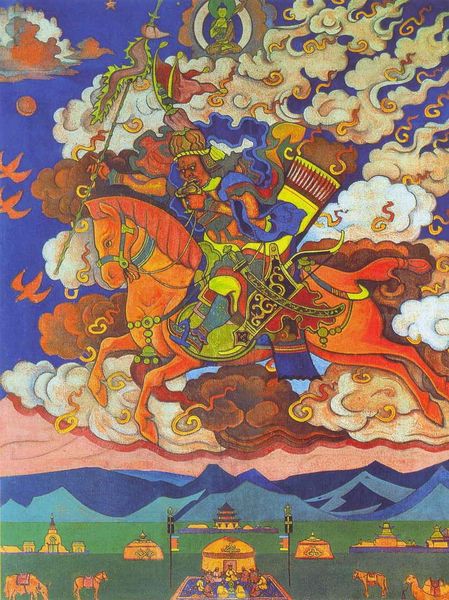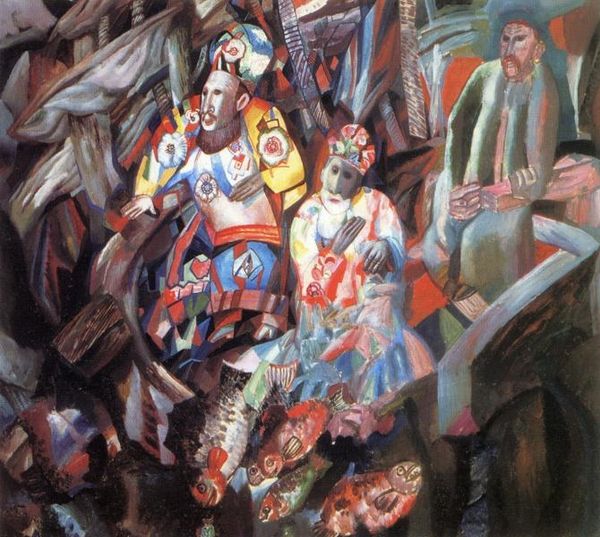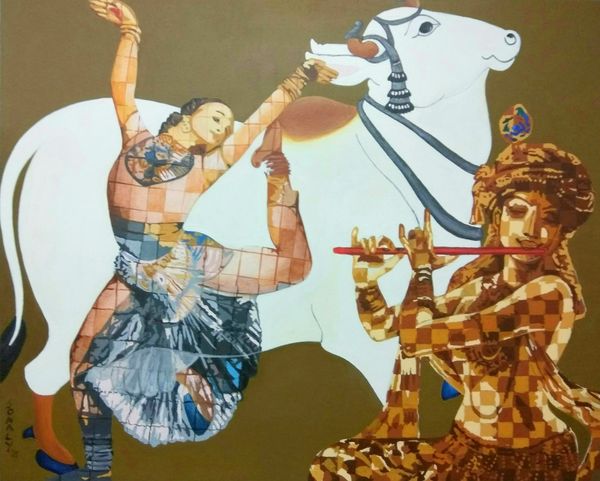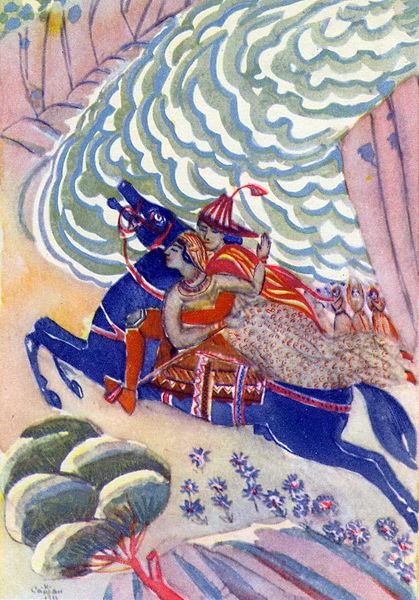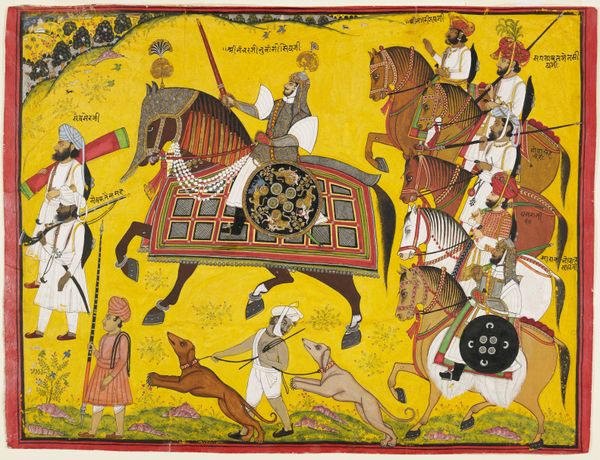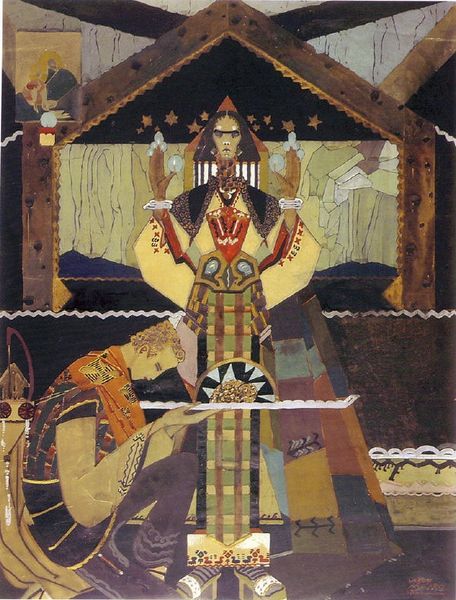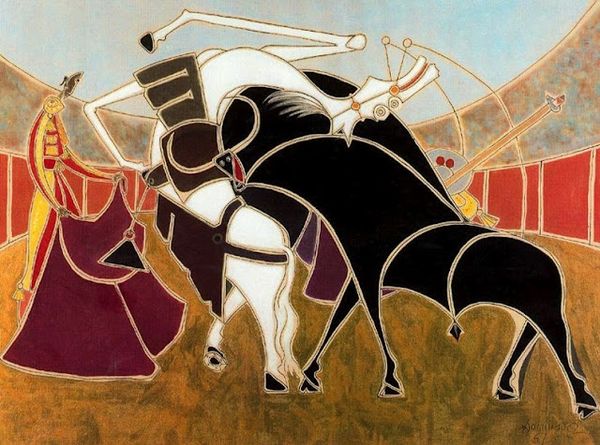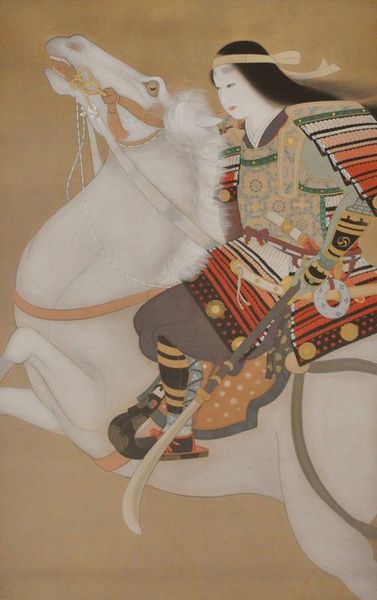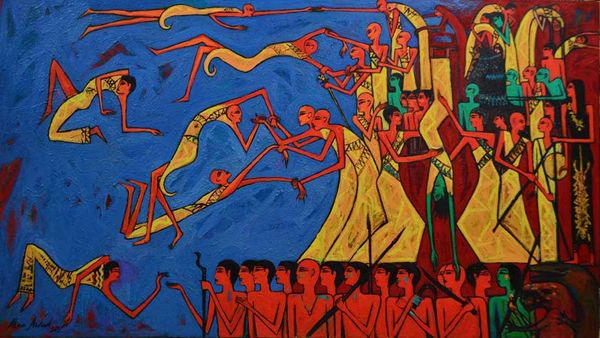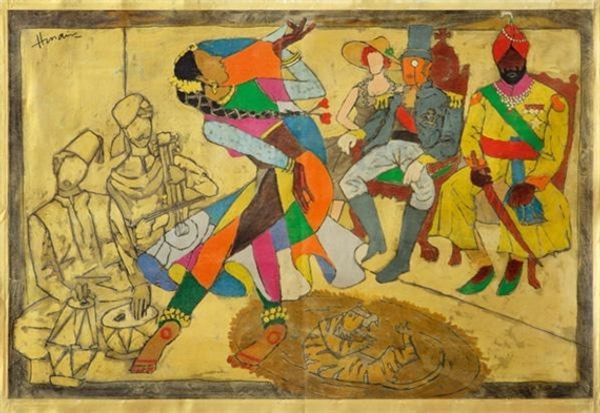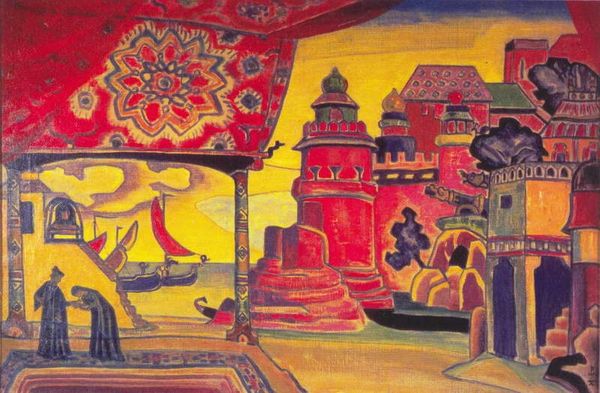
painting, acrylic-paint
#
portrait
#
narrative-art
#
painting
#
asian-art
#
landscape
#
acrylic-paint
#
figuration
#
oil painting
#
acrylic on canvas
#
naive art
#
orientalism
Copyright: Zaya,Fair Use
Curator: This acrylic painting, entitled "Nomadic Tribes" by Zaya, offers a compelling view into a world of movement and cultural richness. Editor: My first thought? This feels like a dream I once had after eating too much cheese and watching a historical drama. It's playful, a little surreal, with this very distinct...eastern sensibility. Curator: It's important to examine how the artwork engages with historical and cultural representations of nomadic life, particularly through the lens of Orientalism. We can ask how the artist interprets and potentially challenges these representations. Editor: Or, you know, maybe they just really liked horses and funky hats! Seriously though, the color palette, especially the reds and blues, just pops. It gives the piece a vibrancy that almost feels...musical. Curator: Absolutely. Color theory can illuminate how these visual choices construct a specific narrative, potentially linked to identity or cultural expression. I'm thinking about how the female figure is presented within a history of orientalism and artistic representation. Is she a symbol of power, a representation of the domestic sphere? What statements about nomadic femininity does she represent? Editor: Well, I also can’t help but focus on her instrument. She’s serenading the moving tribe; or leading them. Or maybe she's just the DJ for this whole surreal journey! Either way, she has such calm control in an almost chaotic scene. Curator: Her presence as a central figure is significant, particularly when we situate her within the matrix of gender and cultural norms. And consider the landscape. Does it conform or resist typical romanticized orientalist landscapes? Editor: It’s interesting… There’s detail, but also simplicity in the portrayal of the landscape which does lend an almost "naive art" quality. This reminds me of folk tales, which often don't concern themselves too much with accurate details. Curator: Yes. It highlights the intersectional potential between social commentary and aesthetics. It compels us to investigate the narrative around nomadic culture. Editor: Absolutely. For me, “Nomadic Tribes” just invites you in. It’s like peering through a storybook, making you ask questions you never even thought about.
Comments
No comments
Be the first to comment and join the conversation on the ultimate creative platform.

